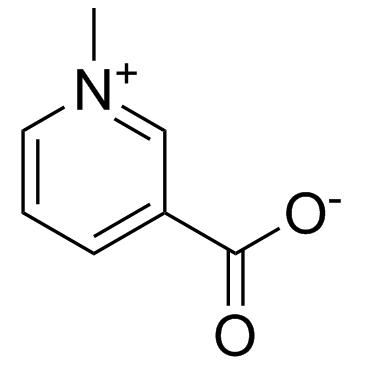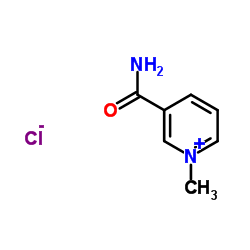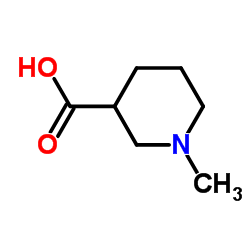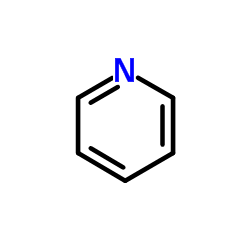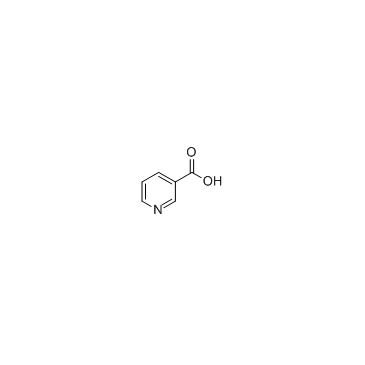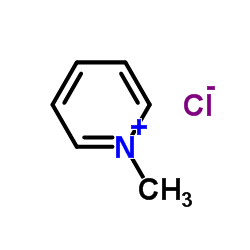6138-41-6
| Name | Trigonelline hydrochloride |
|---|---|
| Synonyms |
Pyridinium, 3-carboxy-1-methyl-, chloride (1:1)
3-Carboxy-1-methylpyridinium chloride Trigonelline hydroch TRIGONELLINE HCL trigonellinium chloride 1-Methyl-3-pyridiniumcarboxylathydrochlorid TRIGONELLIN HYDROCHLORIDE 1-Methylpyridinium-3-carboxylate hydrochloride (1:1) EINECS 228-119-5 N-METHYLNICOTINIC ACID BETAINE HYDROCHLORIDE 1-Méthyl-3-pyridiniumcarboxylate chlorhydrate 1-methylnicotinic acid chloride Pyridinium, 3-carboxy-1-methyl-, chloride N-methylpyridinium-3-carboxylate hydrochloride 1-Methyl-3-pyridiniumcarboxylate hydrochloride MFCD00077250 Trigonelline chloride |
| Description | Trigonelline chloride, an alkaloid with potential antidiabetic activity, is present in considerable amounts in coffee. |
|---|---|
| Related Catalog | |
| In Vitro | It is found that Trigonelline chloride (TG) significantly rescues the morphology of the H9c2 cells. Treatment of cells with Trigonelline chloride attenuates H2O2 induced cell deaths and improves the antioxidant activity. In addition, Trigonelline chloride regulates the apoptotic gene caspase-3, caspase-9 and anti-apoptotic gene Bcl-2, Bcl-XL during H2O2 induced oxidative stress in H9c2 cells. For evident, flow cytometer results also confirm that Trigonelline chloride significantly reduces the H2O2 induced necrosis and apoptosis in H9c2 cells. However, further increment of Trigonelline chloride concentration against H2O2 can induce the necrosis and apoptosis along with H2O2[1]. |
| In Vivo | Trigonelline chloride decreases bone mineralization and tends to worsen bone mechanical properties in streptozotocin-induced diabetic rats. In nicotinamide/streptozotocin-treated rats, Trigonelline chloride significantly increases bone mineral density (BMD) and tends to improve cancellous bone strength. Trigonelline chloride differentially affects the skeletal system of rats with streptozotocin-induced metabolic disorders, intensifying the osteoporotic changes in streptozotocin-treated rats and favorably affecting bones in the non-hyperglycemic (nicotinamide/streptozotocin-treated) rats[2]. |
| Cell Assay | The H9c2 cells are seeded in the 96 well at a density of 1×105 cells/well. The cells are treated with different concentrations of Trigonelline chloride (TG) (25 to 150 μM) and hydrogen peroxide (25 to 125 μM). It is incubated at 37°C in 5% CO2 incubator for 24 h and 6 h respectively and then the culture is treated with the water soluble tetrazolium (WST) reagent incubated for 2 h to 4 h. The living cells absorb the WST then it is converted into an orange colour product. Then, the intensity of colour is measured at 450 nm using spectra count ELISA reader. For cardio protective activity, the cells are seeded and separated into six groups: control, H2O2 alone, the rest of groups are initially exposed to different concentration (25 to 125 μM) of Trigonelline chloride for 48 hours. Then, 100 μM of H2O2 is added and incubated for 4 hours, after, read the absorbance at 450 nm for cell viability assay[1]. |
| Animal Admin | Three-month-old female Wistar rats are used in this study. The animals are divided into five groups (n=10): Control rats, Streptozotocin-treated control rats, Streptozotocin-treated rats receiving Trigonelline chloride (50 mg/kg p.o. daily), Nicotinamide/streptozotocin-treated control rats, and Nicotinamide/streptozotocin-treated rats receiving Trigonelline chloride (50 mg/kg p.o. daily). Administration of Trigonelline chloride starts two weeks after streptozotocin and lasts four weeks. Trigonelline chloride is administered once daily by a stomach tube. All control rats receive tap water (the vehicle) at the same volume of 2 mL/kg p.o. The four-week period of Trigonelline chloride administration is long enough to demonstrate skeletal effects of Trigonelline chloride and other compounds of plant origin in rats. The rats are fasted overnight after the last Trigonelline chloride or vehicle administration. The next day, the blood glucose level is measured and the rats are anesthetized with ketamine and xylazine, and then sacrificed by cardiac exsanguination[2]. |
| References |
| Melting Point | ~260 °C (dec.) |
|---|---|
| Molecular Formula | C7H8ClNO2 |
| Molecular Weight | 173.597 |
| Exact Mass | 173.024353 |
| PSA | 44.01000 |
| Storage condition | -20°C |
|
SECTION 1: Identification of the substance/mixture and of the company/undertaking Product identifiers Product name: Trigonelline hydrochloride REACH No.: A registration number is not available for this substance as the substance or its uses are exempted from registration, the annual tonnage does not require a registration or the registration is envisaged for a later registration deadline.
CAS-No.: 6138-41-6 Relevant identified uses of the substance or mixture and uses advised against Identified uses: Laboratory chemicals, Manufacture of substances SECTION 2: Hazards identification Classification of the substance or mixture Not a hazardous substance or mixture according to Regulation (EC) No. 1272/2008. This substance is not classified as dangerous according to Directive 67/548/EEC. Label elements The product does not need to be labelled in accordance with EC directives or respective national laws. Other hazards - none SECTION 3: Composition/information on ingredients Substances Synonyms: 1-Methylpyridinium-3-carboxylatehydrochloride N-Methylnicotinic acid betainehydrochloride Formula: C7H7NO2 · HCl Molecular Weight: 173,60 g/mol CAS-No.: 6138-41-6 EC-No.: 228-119-5 No components need to be disclosed according to the applicable regulations. SECTION 4: First aid measures Description of first aid measures If inhaled If breathed in, move person into fresh air. If not breathing, give artificial respiration. In case of skin contact Wash off with soap and plenty of water. In case of eye contact Flush eyes with water as a precaution. If swallowed Never give anything by mouth to an unconscious person. Rinse mouth with water. Most important symptoms and effects, both acute and delayed The most important known symptoms and effects are described in the labelling (see section 2.2) and/or in section 11 Indication of any immediate medical attention and special treatment needed no data available SECTION 5: Firefighting measures Extinguishing media Suitable extinguishing media Use water spray, alcohol-resistant foam, dry chemical or carbon dioxide. Special hazards arising from the substance or mixture Carbon oxides, nitrogen oxides (NOx), Hydrogen chloride gas Advice for firefighters Wear self contained breathing apparatus for fire fighting if necessary. Further information no data available SECTION 6: Accidental release measures Personal precautions, protective equipment and emergency procedures Avoid dust formation. Avoid breathing vapours, mist or gas. For personal protection see section 8. Environmental precautions Do not let product enter drains. Methods and materials for containment and cleaning up Sweep up and shovel. Keep in suitable, closed containers for disposal. Reference to other sections For disposal see section 13. SECTION 7: Handling and storage Precautions for safe handling Provide appropriate exhaust ventilation at places where dust is formed.Normal measures for preventive fire protection. For precautions see section 2.2. Conditions for safe storage, including any incompatibilities Store in cool place. Keep container tightly closed in a dry and well-ventilated place. Specific end use(s) Apart from the uses mentioned in section 1.2 no other specific uses are stipulated SECTION 8: Exposure controls/personal protection Control parameters Components with workplace control parameters Exposure controls Appropriate engineering controls General industrial hygiene practice. Personal protective equipment Eye/face protection Use equipment for eye protection tested and approved under appropriate government standards such as NIOSH (US) or EN 166(EU). Skin protection Handle with gloves. Gloves must be inspected prior to use. Use proper glove removal technique (without touching glove's outer surface) to avoid skin contact with this product. Dispose of contaminated gloves after use in accordance with applicable laws and good laboratory practices. Wash and dry hands. The selected protective gloves have to satisfy the specifications of EU Directive 89/686/EEC and the standard EN 374 derived from it. Body Protection Choose body protection in relation to its type, to the concentration and amount of dangerous substances, and to the specific work-place., The type of protective equipment must be selected according to the concentration and amount of the dangerous substance at the specific workplace. Respiratory protection Respiratory protection is not required. Where protection from nuisance levels of dusts are desired, use type N95 (US) or type P1 (EN 143) dust masks. Use respirators and components tested and approved under appropriate government standards such as NIOSH (US) or CEN (EU). Control of environmental exposure Do not let product enter drains. SECTION 9: Physical and chemical properties Information on basic physical and chemical properties a) AppearanceForm: crystalline Colour: white b) Odourno data available c) Odour Thresholdno data available d) pHno data available e) Melting point/freezingMelting point/range: 260 °C point f) Initial boiling point and no data available boiling range g) Flash pointno data available h) Evapouration rateno data available i) Flammability (solid, gas) no data available j) Upper/lowerno data available flammability or explosive limits k) Vapour pressureno data available l) Vapour densityno data available m) Relative densityno data available n) Water solubilityno data available o) Partition coefficient: n- no data available octanol/water p) Auto-ignitionno data available temperature q) Decompositionno data available temperature r) Viscosityno data available s) Explosive propertiesno data available t) Oxidizing propertiesno data available Other safety information no data available SECTION 10: Stability and reactivity Reactivity no data available Chemical stability Stable under recommended storage conditions. Possibility of hazardous reactions no data available Conditions to avoid no data available Incompatible materials Strong oxidizing agents Hazardous decomposition products Other decomposition products - no data available In the event of fire: see section 5 SECTION 11: Toxicological information Information on toxicological effects Acute toxicity no data available Skin corrosion/irritation no data available Serious eye damage/eye irritation no data available Respiratory or skin sensitisation no data available Germ cell mutagenicity no data available Carcinogenicity IARC:No component of this product present at levels greater than or equal to 0.1% is identified as probable, possible or confirmed human carcinogen by IARC. Reproductive toxicity no data available Specific target organ toxicity - single exposure no data available Specific target organ toxicity - repeated exposure no data available Aspiration hazard no data available Additional Information RTECS: Not available To the best of our knowledge, the chemical, physical, and toxicological properties have not been thoroughly investigated. SECTION 12: Ecological information Toxicity no data available Persistence and degradability no data available Bioaccumulative potential no data available Mobility in soil no data available Results of PBT and vPvB assessment PBT/vPvB assessment not available as chemical safety assessment not required/not conducted Other adverse effects no data available SECTION 13: Disposal considerations Waste treatment methods Product Offer surplus and non-recyclable solutions to a licensed disposal company. Contaminated packaging Dispose of as unused product. SECTION 14: Transport information UN number ADR/RID: -IMDG: -IATA: - UN proper shipping name ADR/RID: Not dangerous goods IMDG: Not dangerous goods IATA:Not dangerous goods Transport hazard class(es) ADR/RID: -IMDG: -IATA: - Packaging group ADR/RID: -IMDG: -IATA: - Environmental hazards ADR/RID: noIMDG Marine pollutant: noIATA: no Special precautions for user no data available SECTION 15: Regulatory information This safety datasheet complies with the requirements of Regulation (EC) No. 1907/2006. Safety, health and environmental regulations/legislation specific for the substance or mixture no data available Chemical Safety Assessment For this product a chemical safety assessment was not carried out SECTION 16: Other information Further information Copyright 2014 Co. LLC. License granted to make unlimited paper copies for internal use only. The above information is believed to be correct but does not purport to be all inclusive and shall be used only as a guide. The information in this document is based on the present state of our knowledge and is applicable to the product with regard to appropriate safety precautions. It does not represent any guarantee of the properties of the product. Corporation and its Affiliates shall not be held liable for any damage resulting from handling or from contact with the above product. See and/or the reverse side of invoice or packing slip for additional terms and conditions of sale. |
| Personal Protective Equipment | Eyeshields;Gloves;type N95 (US);type P1 (EN143) respirator filter |
|---|---|
| Hazard Codes | Xi |
| Risk Phrases | R36/37/38 |
| Safety Phrases | S22-S24/25 |
| RIDADR | NONH for all modes of transport |
| WGK Germany | 3 |
| HS Code | 2933399090 |
|
~% 
6138-41-6 |
| Literature: US2008/221173 A1, ; Page/Page column 6-7 ; |
|
~% 
6138-41-6 |
| Literature: Journal of Pharmaceutical Sciences, , vol. 82, # 8 p. 782 - 786 |
| HS Code | 2933399090 |
|---|---|
| Summary | 2933399090. other compounds containing an unfused pyridine ring (whether or not hydrogenated) in the structure. VAT:17.0%. Tax rebate rate:13.0%. . MFN tariff:6.5%. General tariff:20.0% |
